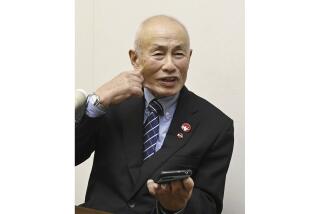Burma Dilemma
- Share via
The statement by the Nobel Peace laureates calling for world action on human-rights violations in Burma (Platform, “Nobelists Plea for End to Burmese Suffering,” Dec. 10) raises once again the troublesome issue of what, if anything, should the United States do regarding the problem.
There appears to be at least four alternatives for the United States. They are:
--Use military force: This alternative does not seem viable or desirable by the majority of Americans at this time.
--Continue the path we are on: Presently it appears the policy of the United States is to allow the situation in Burma to play itself out.
--Stop all aid: This is the alternative which the Nobel Peace laureates are apparently pushing. The United States, for example, could prevent business such as UNOCAL from doing business in Burma. The drawback to this approach is that other countries will simply take our place and the desired effect of economic isolation will not occur.
--Work with other countries: A variation of the third alternative is continue doing business with Burma but work with other countries to apply pressure on the Burmese authorities to change. The drawback to this approach is change will be very slow in coming, if ever.
The answer to improving human rights in Burma is like Burma itself. On the surface Burma appears to be a simple country with simple solutions, but beneath the facade one finds a very complex country with very complex problems.
THOMAS EDWARD WALL
Culver City
More to Read
Sign up for Essential California
The most important California stories and recommendations in your inbox every morning.
You may occasionally receive promotional content from the Los Angeles Times.













